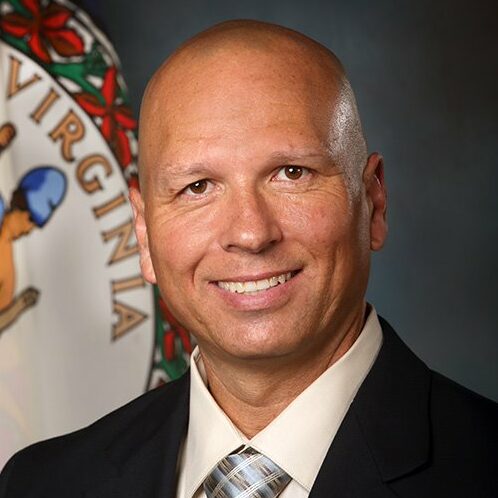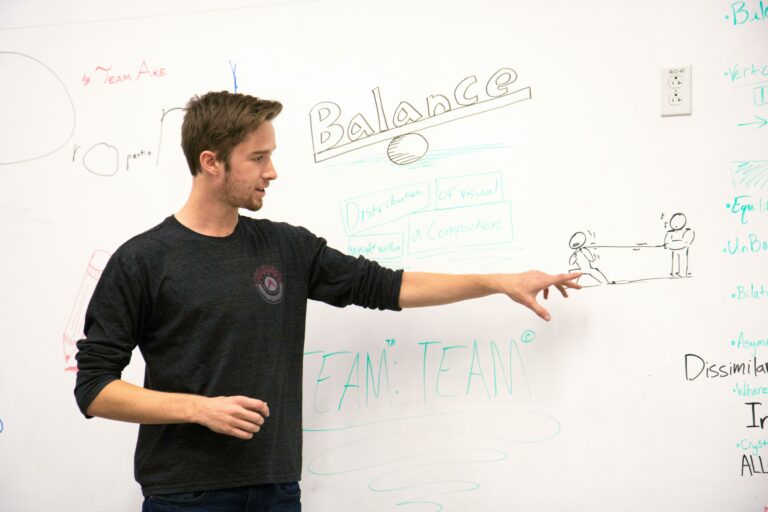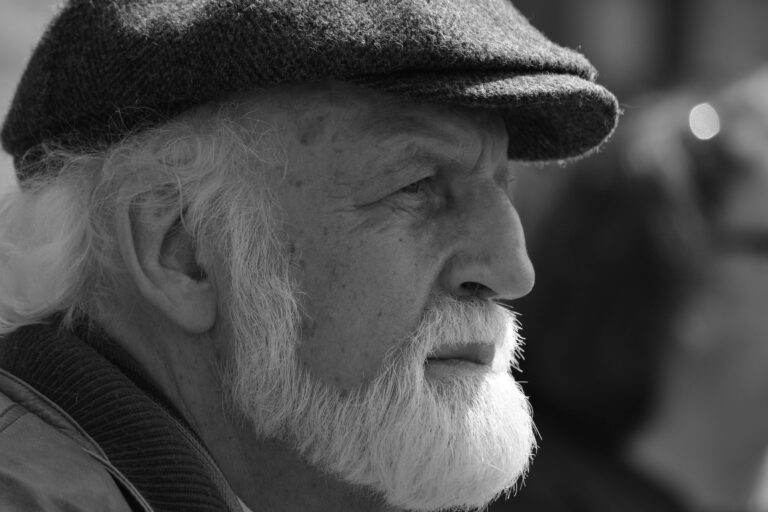
Two years ago, when Carlos Rivero moved from his role as Data Officer for the Federal Transit Administration to become the Commonwealth of Virginia’s first-ever Chief Data Officer, his first task was spelled out for him in no uncertain terms: use data to fight the opioid epidemic. In 2018 the east-coast state of Virginia, with a population of 8.5 million people, was seeing an average of three deaths from opioid overdoses a day.
Rivero quickly got to work. He actioned the Framework for Addiction Analysis and Community Transformation (FAACT) platform, alongside AWS Partner Network’s consulting partner, Qlarion. It became the Department of Criminal Justice Services of Virginia’s first cross-agency, cloud-based data-sharing platform. To ensure there was buy-in across agencies, Rivero created the Data Trust, which established a legal framework for sharing data.
FAACT quickly became integral to the fight against the opioid epidemic, and has now been expanded to give real-time data about the COVID-19 crisis in Virginia. Rivero talked Tech For Good though the process of using data to save lives, and where the technology goes next.
You’re Virginia’s first Chief Data Officer. Could you give us an overarching view of what the role entails?
At the most basic level, it is increasing the value of our data assets over time. In order for us to do that, we have to think about what constitutes a data value chain. Essentially, when you talk about data, it is nothing more than a binary representation of the real world. So how do you generate value out of that data and how do you make it something that you can utilise over and over and over again? Some have talked about data being the new oil, but that’s absolutely false. It’s not a new oil because once you use oil, its value decreases rather quickly; whereas the more you use data, the more valuable it becomes. The way I like to characterise it is that data is the currency of the digital economy. The more access you have to data, the better your decisions will be, and the better your outcomes will be. The more leaders embrace data-driven cultures and help to create and facilitate data-driven cultures, the more we’ll start to see a transition to a data-driven approach to problem-solving.
Let’s talk about the opioid epidemic, and how you used FAACT to tackle it.
Absolutely. FAACT is a project that spawned out of a pilot project that I was mandated to work on by our General Assembly. So in the language that was created for my position, it also specified that I needed to work on a pilot project, addressing the opioid epidemic and providing input with regards to the value of data and data analytics, and data sharing, to help solve this problem.
Was it a relatively new concept to use data to try and solve this specific problem?
They had been trying to utilise data. But there wasn’t one leader that was accountable for the project. And when it’s everyone’s responsibility, it’s no one’s responsibility, right? Nobody’s going to run with it. You need someone to be able to carry that on and so that’s why they made it very clear that that is what they were expecting me to work on. But fortunately at the same time, the Department of Criminal Justice Services was partnering with the Department of Behavioural Health and Developmental Services and a variety of other agencies to actually kick off a pilot project, which is where they partnered with our technology partner Qlarion to start working on a very small-scale pilot in the Winchester community.
Now, I think the key here is that the project was community driven; community focused. Many other organisations, especially at the state level, look at it as a state problem, right? And then they try to bring in a bunch of state-wide data assets that, more often than not, don’t have the level of resolution or granularity that you will need to address a very local, specific problem. The reality is the action needs to take place in the community, so you need to empower community leaders and community stakeholders with the right intelligence at the right time to make the right decisions and take the right action.
For us to come in and come up with analytics solutions that build up the intelligence platform that allows them to derive intelligence from the data that they already had – which they just weren’t able to share with each other – created a lot more value for them.

In real-world terms, what was the direct result of that data on the epidemic?
I’ll give you a good anecdotal story that we recently heard at one of our symposiums. The head of the Northwest Virginia Regional Drug and Gang Task Force monitors the dashboards that we provide daily. One day the number of overdoses that were being reported at the local hospital was much higher than the normal threshold that they were experiencing. And so he immediately turned to his task force and said, ‘Stop everything you’re doing, go to the hospital and start interviewing these individuals. Let’s find out where they’re getting their drugs from and if this is something that’s local to one place’. And they identified that it was local to a specific location, were able to get a warrant, and they locked that down. For the next three weeks, it didn’t have a single overdose. That’s pretty powerful, right?
If that data hadn’t been coming in on a daily time step, if it had been coming in only once a month, they would have completely missed it. There would have been a month’s worth of overdoses happening.
Tell us how the success of FAACT has informed your response to COVID-19 in Virginia?
So the very interesting thing about that is that the pattern is pretty generic, right? The implementation of the technology may be specific and there are nuances about it, but the pattern is the same: bring data assets together, massage those data assets into a format that will be easily digested and understood by the people who are taking action and then provide them that intelligence. So thankfully with the FAACT project we had already been considering, what is that pattern and how do we leverage this environment to be able to expand it into more communities all the way out to the entire Commonwealth.
We brought in partners like the Virginia Department of Health, Virginia Hospital and Healthcare Association – which is a private association. We also brought in the Department of Corrections, and the Department of Emergency Management, which are new players to the Data Trust. It allowed us to support the Governor, his state cabinet, the COVID-19 Unified Command, and even individual health district directors across the Commonwealth to give them the intelligence they need to help inform their operations.
That’s a lot of work to get that sort of buy-in across so many different departments.
It is. It absolutely is. It’s a lot of coercion, a lot of persuasion and influence, but it’s for the greater good. We’re really doing things that are supporting saving lives at the end of the day. They’re saving lives. And I think one of the driving principles behind the success we’ve had is that everyone understands that what we’re doing is tied directly to saving lives. It’s pretty tight because people can clearly see that the data assets we’re bringing in and the decision-making framework that we’ve created directly correlates with our ability to save lives. And that I think has been key.
In specific terms, how is the data helping your ability to save lives during COVID-19?
First and foremost, at the very beginning we were really concerned about our hospitals and our healthcare system being overwhelmed with COVID cases. So the supply of personal protective equipment [PPE] was extremely important. Being able to bring that data in-house and identify which healthcare systems and which hospitals were having difficulties obtaining PPE, and then being able to improve our supply chain to get those supplies right to where they needed to be on time and as fast as possible, was critical. We could also look at the relative distribution of COVID cases across the Commonwealth and assess how healthcare systems could easily be overwhelmed with 10 cases, as opposed to a system that would need a thousand cases to be overwhelmed, for example.
Some have talked about data being the new oil, but that's absolutely false. Once you use oil, its value decreases. The more you use data, the more valuable it becomes
Have successes like this, during a crisis, helped to drive acceptance that data can be relied on as a key area of combatting crises?
I think there is a cultural shift. People are starting to realise that the governance framework, the legal framework and the technology framework that we’ve designed and put together is suitable for the kind of work that we’ve been talking about doing for well over the past decade. I think between the FAACT project and the COVID-19 response, we’ve really illustrated the value and the capabilities of the platform and all of the different frameworks that surround it so that people are starting to become more confident in our ability to actually do this for everything, not just for these very specific use cases.
After the opioids epidemic and COVID, where do you think the data-led focus will shift to next?
To be honest with you, it’s really now more about the economic recovery and looking at the economic impact of COVID on our most vulnerable populations. In particular, the communities where the primary occupations are more service-oriented that don’t have the ability to work from home.
What role can new technologies play in improving the lives of the most vulnerable?
Being able to provide the right level of connectivity to each of these different communities is critical. With broadband it’s almost like back in the day when electricity became a basic utility that everyone should have access to. That’s the same way we should start thinking about broadband connectivity: it’s a basic utility that everyone should have access to. And right now that is not the case.
Tied in with this is housing problems and homelessness. Is that an issue you’re keen for data to help tackle?
Absolutely. I have projects with the Department of Housing and Community where we are implementing a Data Trust to help them identify the services that they’re providing to the homeless population. That gives us a more holistic view of homelessness across the Commonwealth, rather than just what’s happening in a particular city. That helps us understand what are some of the things we can do from a resource perspective that are going to help mitigate some of the impacts of homelessness.
On a broader final point, with the US elections coming up, what sort of role does tech play in ensuring the process works fairly for all? Can you foresee a future where elections are done online safely and securely?
That is a very, very touchy topic, especially as we talk about other organisations attempting to influence the results of the elections. And when you talk about technology, there’s always a flaw somewhere, and it’s just waiting to be discovered by someone. I think really at the core of this is not so much how are we going to have online elections, it’s really more about does everyone in your constituency have an equal opportunity to vote? That’s really the question that we’re trying to get to: have we made it easy and simple enough for everyone in your society to vote? Then the technology question comes into play, because if we talk about a technology solution, that would mean that everyone who is eligible to vote would have access to the same technologies. And we know for a fact that today that doesn’t exist yet.



